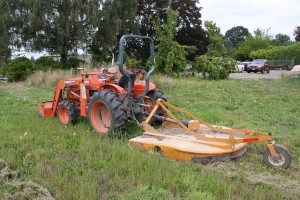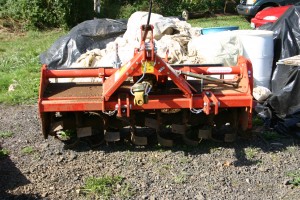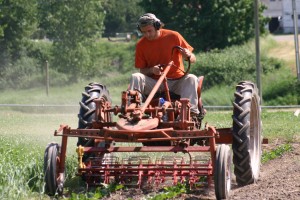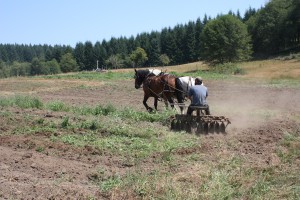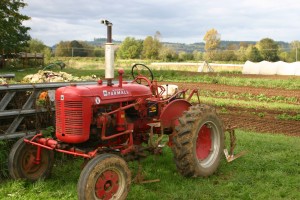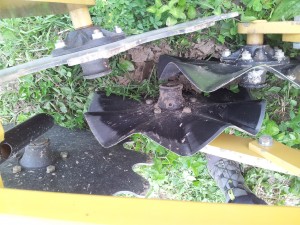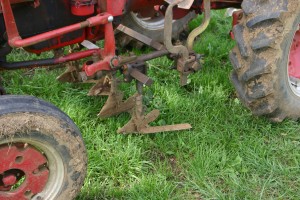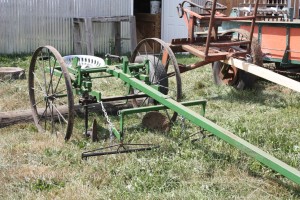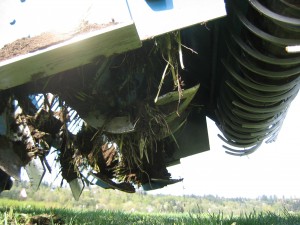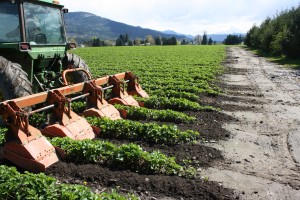Why till?

The word “tillage” is used to refer to many types of mechanical operations that move soil to change soil conditions, manage crop residues, manage weeds, or incorporate fertilizers or pesticides. Specific tillage systems may be referred to by the primary tillage implement used such as a plow, rototill, spader, strip till, ripper, etc. Sometimes tillage systems are referred to by their overall objective, such as conventional tillage, conservation tillage, no-till, or reduced tillage. Secondary tillage refers to soil disturbance following primary tillage that is designed to prepare a seed bed or achieve some other specific objective. Cultivation lightly disturbs the soil surface to manage weeds and residues.
Tillage provides a nice seedbed by temporarily decreasing soil compaction. In this “looser” soil, seedlings can grow more easily, air exchange is facilitated, and water penetrates more rapidly. Also, competing plant species are injured or killed by tillage. In annual cropping systems, even in no-till systems, it is necessary to disturb soil to place a transplant or seed. No-till or conservation tillage systems reduce soil disturbance to minimize the negative impacts of tillage.
Timing
Tillage can be destructive to soil quality, especially when it is done at the wrong time. Excessively wet soils are said to be “plastic”; they move and smear easily and can be molded by heavy machinery leading to sub-soil compaction. If deep tire tracks are left in the soil, then the soil is probably too wet for tilling. Implements such as rototillers and spaders will also destroy aggregates and form clods to a greater extent in excessively wet soil.
The proper time to till soils is when they are “friable”, meaning that the physical impact of tillage equipment breaks soil rather than smearing or molding it. Clay content affects the range of soil water content when soils are friable; soils rich in clay become plastic at a lower soil water content than sandier soils and also have a narrower window of water content when soils are friable.
Resources:
Use of Tillage in Organic Farming Systems: The Basics. 2015. eOrganic. By Joel Gruver and Michelle Wander.
Challenging balance between productivity and environmental quality: Tillage Impacts. 2011. By D.C. Reicosky, T.J. Sauer, and J.L. Hatfield. In, Soil Management: Building a Stable Base for Agriculture. American Society of Agronomy and Soil Science Society of America, Madison , WI.
Steel in the Field, by Greg Bowman. 2002. Sustainable Agriculture Network,. This book is a thorough resource on cultivation equipment and practices. It includes numerous farmer profiles and covers mechanical weed control in agronomic row crops, horticultural crops, and dryland crops.
Selecting a Tractor for the Small Farm. 2014. Cornell University Small Farms Program, by Rich Taber. This article describes attributes to look for in a tractor depending on what farm activities will be done.
Resources for horse-drawn farming equipment: I&J Manufacturing
Implements
There are numerous pieces of equipment that can be used to move soil for a particular purpose. For example, the Soil Science Society of America’s Glossary of Soil Science Terms has 118 entries under “Tillage”.
Select pieces of tillage equipment are shown below.
Tractors
Tractors are not essential for every farm. Walk-behind two wheel “tractors” are often sufficient for smaller operations. It is also possible to hire operators and machinery for custom work. However, for many, a tractor opens up new opportunities for mechanizing labor-intensive operations and may allow for increasing scale.
